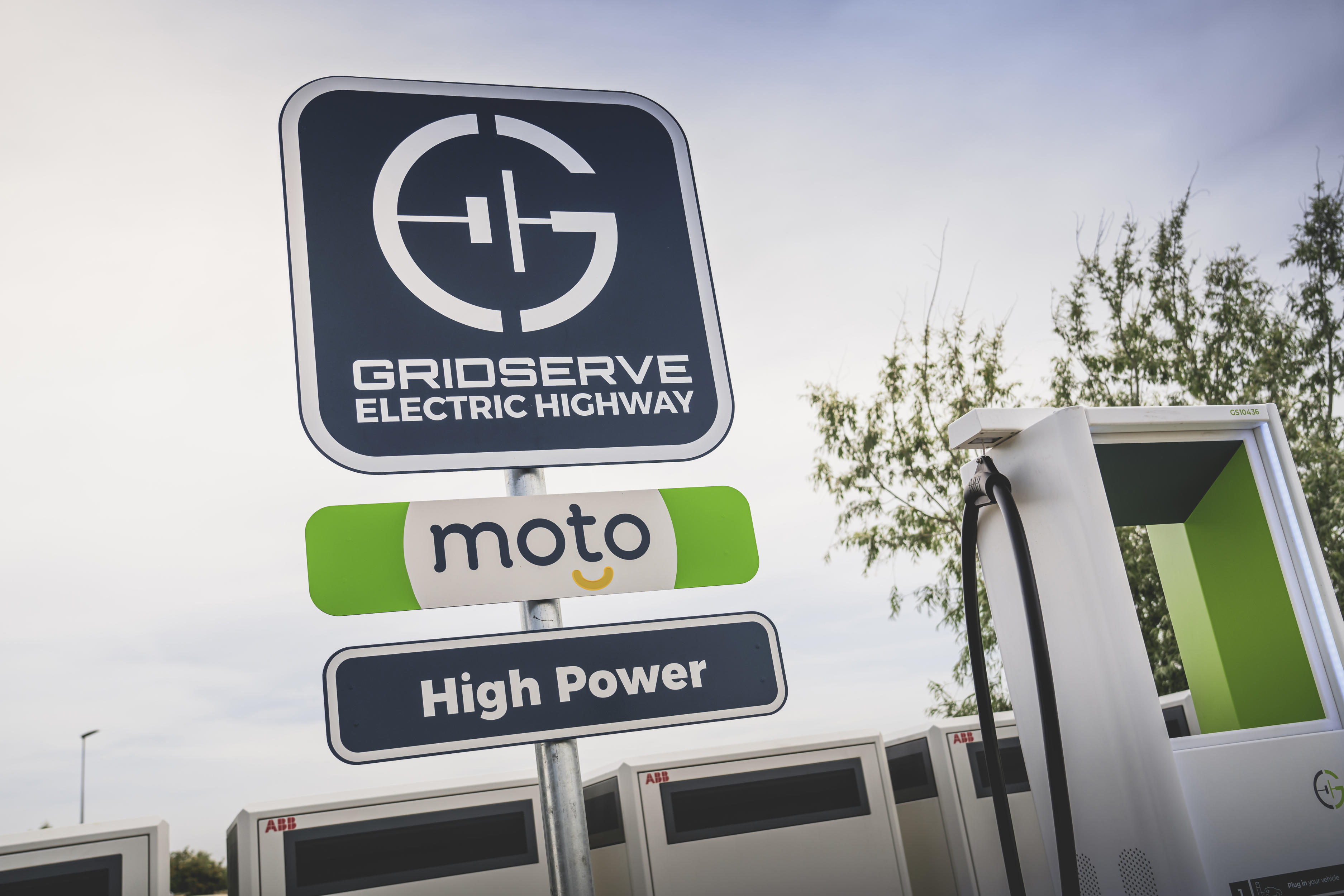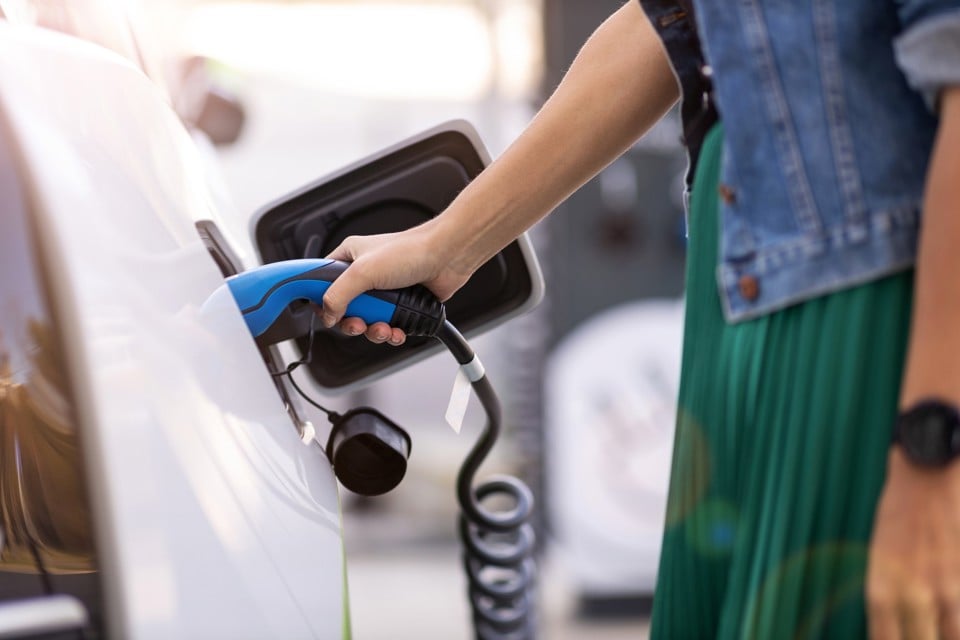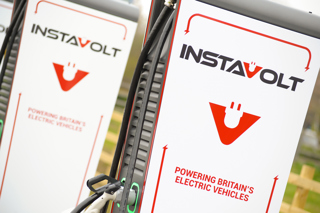Almost 400,000 electric vehicles (EVs) are estimated to be on the roads this weekend, with tomorrow (Saturday, July 22) expected to be the UK’s busiest day ever for charging.
Significant increases in EV ownership in recent years, combined with what the RAC is predicting to be one of the busiest holiday getaway weekends of the year, are expected to put the UK’s charging infrastructure to the test, according to Moto Hospitality.
Queues are widely expected at sites located on major routes to holiday destinations including the south-west, Wales, Cumbria, Scotland and the north-east.
Moto is expecting to deliver a record one million EV kilometres in charging output across its network this Saturday alone.
However, despite the rollout of ultra rapid EV chargers on the UK motorways, Moto says that queues at some charge points will be unavoidable for EV drivers.
Marshalls to manage demand
Moto says it will be working with Tesla and Gridserve to provide marshalls at key sites throughout the weekend and into the school summer holidays.
Marshalls will help manage the flow of EV traffic, identify available chargers and bays, and ensure the safety of EV drivers and nearby pedestrians, as well as providing reassurance and a visual presence to coordinate motorists during busy times, it said.
However, Moto CEO Ken McMeikan is warning that marshalling will not be a long-term solution to queues and that ultimately much more power is required for the charging capacity which is needed in order to service demand.
He said: “This weekend’s queues will unfortunately be inevitable if more action isn’t taken to support charging providers’ rollout of ultra-rapid EV charging.
“The UK needs to decarbonise, and the switch to EV is one of the most important elements of that. However, as charging providers, time and time again we‘re being confronted by significant barriers in our ambition to make that switch easier for motorists.”

Charge point growth
By the end of this year, ministers had hoped that every motorway service area in England would have six or more rapid or ultra-rapid EV chargers.
However, research conducted by the RAC in May, showed that less than a quarter (23%) – 27 of 119 motorway services reviewed by the RAC on Zapmap – had the target number of chargers to serve the UK’s estimated 760,000 battery electric vehicles (BEVs).
The latest figures from Zapmap show that there are now more than 170 ultra-rapid charging hubs across the UK, with the overall charge point installation rate increasing by more than 80%.
The mid-year statistics for charge point installations reveal that compared to the first half of 2022, when an average of 891 charging devices were installed each month, the UK is now seeing an average of 1,622 charging devices installed per month.
This means the rate of installation has increased by around 82%. If the current rate of growth continues, Zapmap calculations indicate there will be more than 50,000 charge points in the UK by the end of the year.
The latest Zapmap figures show that there were more than 44,000 public charging devices installed across the UK, as of the end of June 2023. This represented overall year-on-year growth of 36%.
Breaking down the figures down by power rating shows that almost 20% of devices are rapid or ultra-rapid chargers.
Securing power supply
Moto has launched ‘Motofesto’, which aims to lift the lid on some of the major barriers that industry faces in addressing the electric charging supply gap.
In particular, it points to the challenges that Moto and others are facing when it comes to securing power and the necessary National Grid connections.
McMeikan continued: “Upscaling and maintaining an ultra-rapid charging network for our strategic road network alone would need grid capacity equivalent to the average annual electricity usage of nearly three quarters of a million homes by 2030 – more than three times as many homes as there are in Cumbria.
“It’s a huge power challenge that is underestimated and underappreciated by Government.
“We can secure and install the chargers relatively easily, but delivering power to those chargers is becoming a major issue.”
Moto claims that at the current rate of development, industry will not be able to secure access to the levels of power output needed without changes to the way the Government, distribution network operators (DNOs), charging providers and others collaborate to deliver charging infrastructure.
The Motofesto calls on the Government to designate public EV infrastructure as ‘nationally significant’ and speed up planning consents for network connections, or risk having UK motorists being forced to queue for hours at a time in order to charge their car at a public charging hub.
The Motofesto makes a series of recommendations, including the creation of further EV installation targets for motorways and A-roads that currently oblige landlords, motorway service operators and local authorities to deliver and meet 2030 charging demands.
In order to tackle what it describes as “prohibitively expensive” grid connections, it also wants Government to accelerate immediate access to the £950 million rapid charging fund, which was originally announced in 2020.
Furthermore, it is recommending that ministers reinstate the plug-in car grant for more affordable new models and extend it to used EV cars, the scrapping of the 20% rate of VAT on public charger and the brakes being put on the planned introduction of vehicle excise duty (VED) for electric cars.
Grid reinforcement needed

A separate report from EV trade body Recharge UK, published this week, aims to provide a roadmap to accelerate charge point deployment.
The report - ‘Charging Forward to 2030’ - sets out how to accelerate the rollout of EV charging by breaking down the policy and regulatory barriers to charge point deployment and meet the energy demand on the grid by 2030 from public charging.
The report provides insight as to which parts of the UK are likely to experience high levels of public charging demand and will therefore require improvements to local energy networks and the deployment of flexible energy solutions.
Birmingham has the largest demand for energy in the UK of 339.9GWh as it has the largest vehicle count of any part of the UK with 1.1 million vehicles today.
Significant energy demand will therefore be put on Birmingham by 2030 and to future proof it, the report says that local authorities must begin examining where grid reinforcement is most likely to be needed over the next seven years.
Glasgow is the second largest with 231GWh of demand, closely followed by Sheffield and Peterborough.
Furthermore, the report calls for EV infrastructure specific solutions to resolve geographic inequality in charge point deployment, ensuring that no areas are left behind on the electrification journey leading up to ban on the sale of new petrol and diesel cars and vans in 2030.
Mark Constable, chair of Recharge UK, said: “This report focuses on a wide range of areas that have a vital influence over the whole UK's ability to accelerate the rollout of electric vehicle charging infrastructure.
“The Government has addressed several barriers already with financial incentives in many parts of the EV market. We hope they will go on to address some of the process challenges in both legislation and market operations - none of which was written with the transition to EVs in mind.
“There are no industry stakeholders who would not agree that these areas need reform.”
Melanie Shufflebotham, chief operating officer and co-founder of Zapmap, says that the UK is making good progress, but there are plenty of challenges ahead and gaps that need to be bridged in readiness for the 2030 deadline.
"This new report does a great job of summarising the critical issues, from the cross-industry collaboration needed across planning and electricity supply to the green skills gaps we need to address,” she added.
"Crucially, it forecasts the amount of energy we will need for public charging by 2030 and 2050, and highlights the broad regional distribution of chargers that will be needed.
“It is vital reading for anyone working on the shift to electric vehicles.”
























Login to comment
Comments
No comments have been made yet.